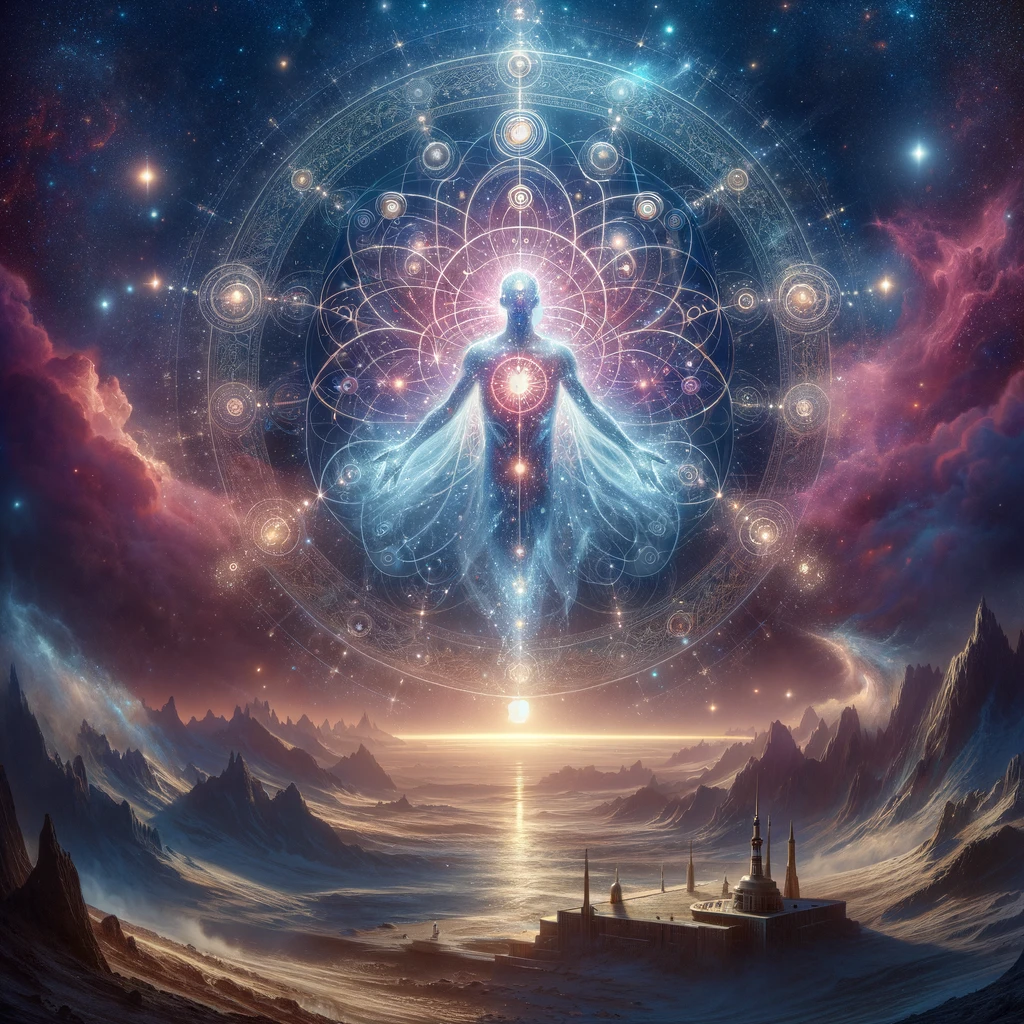Bahamut, often depicted as a gigantic fish or a dragon in various mythologies, holds a significant place in Middle Eastern and Islamic folklore, as well as in modern fantasy literature and games. This mythological creature embodies the vastness and mystery of the cosmos, serving as a symbol of the foundations upon which the earth rests in certain traditions.
Origins and Descriptions
In ancient Middle Eastern mythology, Bahamut is sometimes described as a massive fish that supports the earth. This imagery is particularly prevalent in Islamic cosmology, where Bahamut is often portrayed as one of the layers that support the earth, resting upon the back of a bull or a whale, with various other creatures and layers above and below it, contributing to the stability of the universe.
The descriptions of Bahamut vary, with some tales depicting it as a dragon with an elephant’s head or as a vast, unimaginable fish swimming in the cosmic ocean. Its size is said to be so immense that humans cannot begin to comprehend its true extent, symbolizing the boundless nature of the universe and the mysteries that lie beyond human understanding.
Role in Mythology
In mythology, Bahamut serves a profound role that transcends its physical descriptions, embodying the mysteries of the cosmos and the structure upon which the world is believed to be founded. This role varies across different cultures and traditions, but it consistently highlights the creature’s significance in the cosmological and metaphysical framework of the universe.
Islamic Cosmology
Within Islamic cosmology, Bahamut’s role is crucial in the hierarchical structure of the universe. It is often depicted as a gigantic fish or sea creature, supporting the earth on its back. Above Bahamut, there are layers of other mythical entities and the earth itself, each contributing to the balance and stability of the cosmos. This structure emphasizes the interconnectedness and dependency of all elements within the universe, with Bahamut acting as a foundational layer that holds everything together.

Bahamut’s existence in Islamic mythology underscores the belief in the unseen and the vastness of Allah’s creation, which far exceeds human understanding. It reminds the faithful of the intricate and balanced design of the universe, governed by divine will and beyond the full grasp of human intellect.
Beyond its specific role in Islamic cosmology, Bahamut represents the concept of infinity and the unfathomable scale of the universe. Its incomprehensible size and the mysterious nature of its existence serve as metaphors for the boundless wonders of creation and the limits of human perception. Bahamut symbolizes the deep, primordial forces that underpin existence, reminding us of the awe-inspiring and enigmatic aspects of the world and the universe at large.
Modern Mythology and Fantasy
In modern interpretations, particularly in fantasy literature and gaming, Bahamut’s role often shifts to that of a powerful dragon or deity, embodying ideals such as wisdom, justice, and protection. These portrayals, while diverging from traditional mythological descriptions, retain the essence of Bahamut’s grandeur and significance. In these contexts, Bahamut often serves as a guardian or a guide, offering aid to heroes or serving as a formidable challenge to overcome, symbolizing the eternal struggle between good and evil, order and chaos.
Bahamut’s role in mythology, spanning from ancient cosmological structures to modern fantasy narratives, illustrates the creature’s enduring appeal and significance. Whether as a foundation of the world in Islamic tradition or a symbol of ultimate power and mystery in contemporary fantasy, Bahamut captures the human imagination’s boundless nature. It serves as a bridge between the known and the unknown, the seen and the unseen, reminding us of the universe’s infinite complexity and the perpetual quest for knowledge and understanding.
In contemporary culture, Bahamut has been embraced by various forms of media, including video games, literature, and tabletop role-playing games. In these contexts, Bahamut is often reimagined as a powerful dragon or deity, commanding elements or offering wisdom and protection to those deemed worthy. These modern interpretations have broadened Bahamut’s appeal, introducing the ancient mythological figure to new audiences worldwide.
Sightings
In the context of Bahamut, a mythological entity deeply rooted in Middle Eastern and Islamic cosmology, the concept of “sightings” doesn’t apply in the traditional sense. Unlike cryptids or natural phenomena that may be observed in the physical world, Bahamut’s existence is purely mythological and symbolic, representing concepts and beliefs rather than a being that could be encountered or documented.
Bahamut is described in ancient texts and folklore as an unimaginably large creature supporting the Earth, often invisible and incomprehensible to the human mind. Its “presence” is felt not through sightings but through the philosophical and spiritual principles it embodies within Islamic and Middle Eastern cosmology. Bahamut symbolizes the vast, unknown mysteries of creation, serving as a reminder of the limitations of human perception and understanding.
The closest equivalents to “sightings” of Bahamut are the representations and mentions in religious texts, philosophical discussions, and artistic depictions. In these contexts, Bahamut is often used to illustrate the complexity and majesty of the cosmos, the intricate balance of the natural world, and the infinite power of the divine. These symbolic “sightings” provide insight into human attempts to conceptualize and give form to the foundational elements of existence and the universe’s structure.
Bahamut’s enduring legacy in mythology and modern culture speaks to the human fascination with the cosmos and the mysteries it holds. Whether depicted as a supporting fish or a majestic dragon, Bahamut represents the awe-inspiring aspects of the universe that lie beyond our comprehension, reminding us of the wonders and mysteries that await discovery in the vast tapestry of creation.


















